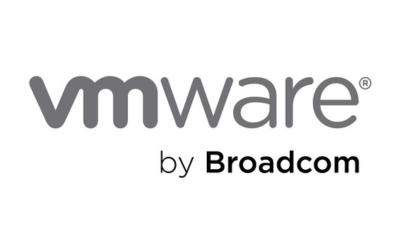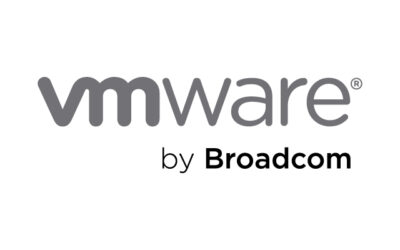What is the cloud?
Think of your own personal computer (PC) and all the data (documents, images, videos, applications etc.) that is stored on it, as well as the programs (email, games, word processor) that run on it.
Over the past 10 years, as broadband connections became faster and more reliable, ‘cloud’ companies began to offer the services you used to find on your PC (data storage and software) over the internet.
For many businesses, cloud services remove the need for expensive hardware acquisition (CAPEX) and lower their operational expenditure (OPEX) for things such as power (to run their in-house servers 24×7) and rent (the space servers physically occupied in an office).
They also benefitted from reduced maintenance costs associated with patching servers and upgrading software as these are carried out automatically by the cloud service providers.
Flavours of the cloud – public, private & hybrid
At a high-level there are two types of cloud available to businesses: public and private. Examples of the public cloud include AWS (Amazon Web Services) and Azure (by Microsoft), where data is stored on infrastructure that you don’t own. For security and operational reasons you’re unlikely to know specifically where their data centres are physically located. Your data in applications like iTunes, Dropbox is also stored on the public cloud.
Private clouds are similar to public clouds, but for the crucial difference of ownership of the physical resources and, by proxy, who else has access to those resources. Private clouds are dedicated to your organisation and not shared with anybody else.
In the middle is hybrid, which is the path many companies are now taking – while we’ll go into more detail later, broadly speaking this is a blend of public and private cloud solutions.
Public cloud
Public cloud can be further sub-divided into 3 different categories. Choosing which one is most suitable for your organisation may depend on the technical expertise you have available:
IaaS
One way to think about the different levels of public cloud is to picture yourself at your computer/PC. When buying IaaS (Infrastructure as a Service) you’re effectively buying the physical computer, a CPU, some hard disc space and some RAM. IaaS gives you the flexibility of choosing which operating system (for example, Windows 10) and software you choose to put on it, so you’ll need to ensure that all the applications are kept up-to-date.
This kind of public cloud is geared towards IT administrators, and is suitable if you want to host your own applications but don’t want to look after physical hardware. It’s usually unmanaged, so you will often need technical expertise to maintain it.
PaaS
With PaaS (Platform as a Service), again if you’re sitting down in front of your computer, you boot it up and already have the default operating system dictated by the package, i.e. Windows, Linux, iOS etc. You can then choose whatever software you’d like to run. It’s basically a company delivering the operating system to you, the platform is set, but with less control than with IaaS. PaaS is basically an invisible infrastructure allowing you to effectively drop applications into the platform.
This service is sold with the software developers in mind – you’ll need someone fairly technical to run a PaaS.
SaaS
SaaS (Software as a Service) is essentially software on the internet and a model that more and more companies are adopting. SaaS examples include Salesforce, Google Docs and Office 365. You can’t change the software – you can feasibly change some of the settings – but the software is the software.
This kind of service inevitably offers less control than the IaaS or PaaS, but is developed with the end-users in mind.
With these services, the data is stored in the cloud, so you won’t have to worry about running out of disk space (although you might have a storage allowance in some instances). However, you have limited control over customisation and you don’t have control over the infrastructure, so if the servers or the data centre which the SaaS service runs on go down, then you won’t be able to access it.
Choosing between IaaS, PaaS and SaaS comes down to control. With IaaS you have much more control whereas with SaaS you’re buying a solution, but it’s managed for you.
Public vs Private vs Hybrid cloud
What are the advantages and disadvantages of each of these cloud models? With public cloud, your resources are owned by the cloud provider (AWS, Google, Azure etc.). With private cloud, you have a lot more control, as the infrastructure is exclusive to you and is often stored within a data centre or can be in your own offices. As the name dictates, a private cloud instance is not shared with anyone else.
If you want to know where your data is physically being stored and have greater control, you can have your own Private PaaS and/or SaaS. The IT department may create their own ‘cloud’ on hardware in a data centre then deliver PaaS and SaaS back into their own business – this typically costs a lot of money, hence why it’s normally only implemented at larger organisations.
Then there’s hybrid, the model a lot of companies are adopting, a combination of public and private cloud – which gives the flexibility of having responsive capacity when needed, but with stable monthly costs for day-to-day workloads.
If you’re processing lots of data where you’ll need the ability to scale quickly, you can use the public cloud for these tasks. For smaller IT infrastructure needs which have to regularly be met, you can run these parts on your private cloud. In this scenario, hybrid offers high-level security combined with flexible performance.
Why move to the cloud?
There are a few key reasons why people move to the cloud, including:
- Increased demand from applications, where it’s difficult to physically scale quickly enough.
- Need to reduce hardware costs. Disclaimer: it can be more expensive long-term to move to the cloud, so buying sensibly (e.g. buying your own hardware) can save you money.
- In the event of your servers going down, having another instance in the cloud as backup can avoid the potential risk of being offline or downtime.
- Reducing the time cost of managing and maintaining your own hardware.
- If you already have applications which have SaaS versions available (e.g. Microsoft Office), the transition to cloud might make sense.
So is there one clear winner in all these solutions?
Following the initial mad rush for cloud services such as AWS and Azure, the last couple of years has seen organisations realise that there isn’t an easy answer. For one, a lot of applications (e.g. operating systems) do not always play well in the public cloud.
The market shows that “no one size fits all”. In fact, based on a survey of 1,000+ employees, 85% opted with a multi-cloud solution, using multiple vendors, cloud instances, or a mix of private and public cloud.
What are the risks of moving to the cloud?
If you have sensitive data, you may want to consider using solutions other than public cloud. Over the past few years, a number of SaaS systems have been hacked, and so to an extent, public cloud can be vulnerable. You also can’t control who you share the cloud with, and how they use up those resources, which may affect your applications.
For some businesses, such as logistics companies using specialised software, using the cloud is a particularly big barrier as a number of applications may require lots of modifications in order to work, or simply won’t function in the cloud.
If you are an IT Manager and view your current setup as “if it’s not broke don’t fix it”, you may wish to keep your existing hardware. In this case, it may make financial sense to move your hardware into a data centre.
What else should you consider if moving to the cloud?
If you have applications which run on an older operating system, you’ll need to check whether it’s compatible. Not all operating systems are compatible with cloud providers – Windows 2000, in particular, now rarely gets supported.
Before migrating your workloads, check how difficult it is to migrate by testing with small applications. You’ll also want to check for network and IP issues, reliability improvements using the cloud and the level of support.
Not sure where your data should be held?
If you have any questions about where you should store your data, give our technical experts a call on 0800 983 2522 or contact us at sayhello@redcentricplc.com



